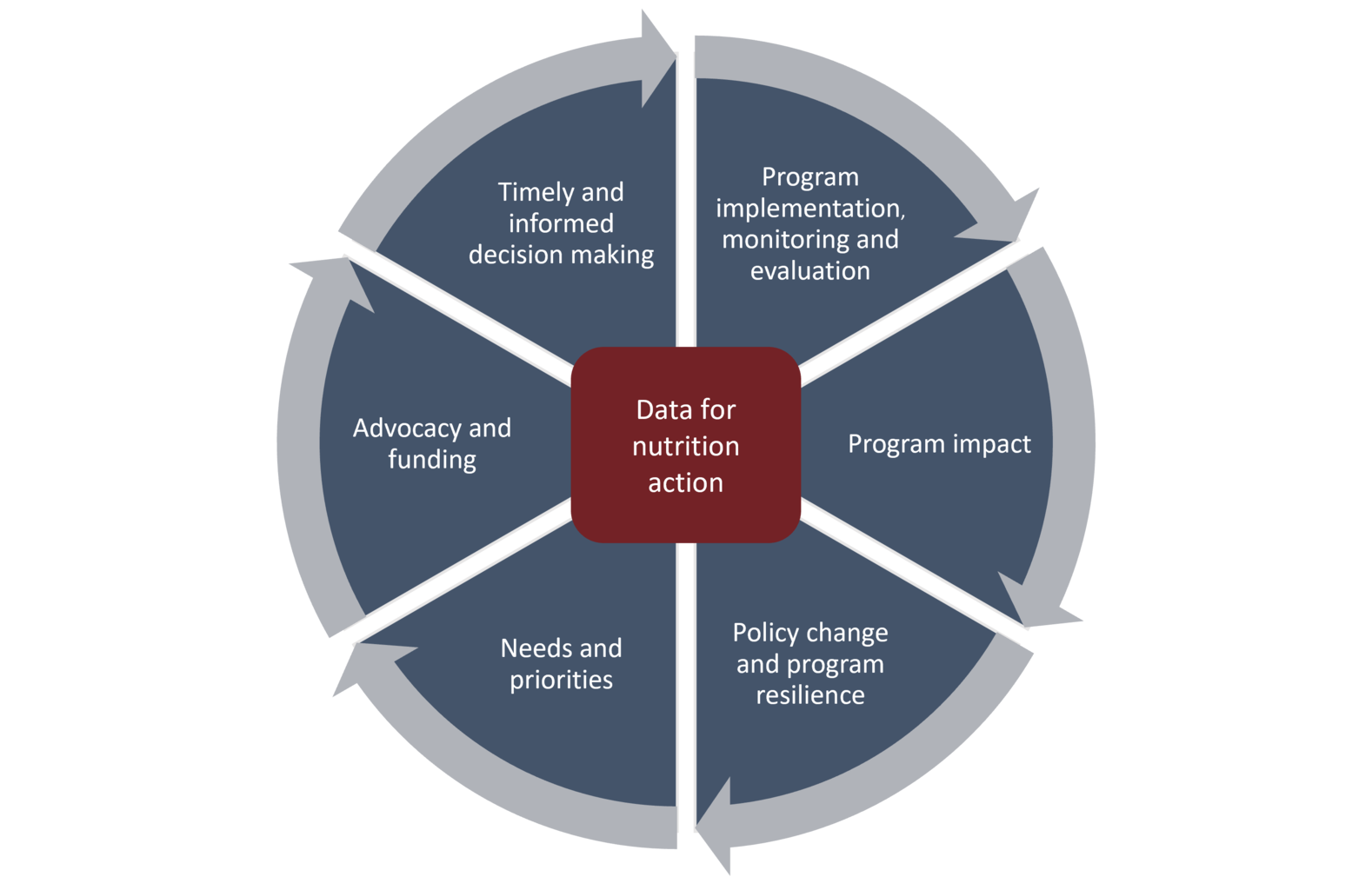Blog Posts
Seven can’t-miss moments for global nutrition in 2023
January 11, 2023
Leveraging data for action in nutrition
COVID-19 highlighted the critical and urgent need for timely and reliable data to drive decision-making. The nutrition community needs to harness this learning.
Posted on October 1, 2021
Un groupe d'adolescents au lancement du plan d'action sur la nutrition du comté de Busia, soutenu par Nutrition International
The COVID-19 pandemic drew substantial investment into data analytics and visualization in global and public health. Developers stepped up with succinct and informative infographics and dashboards for public consumption, which were also adopted by government and public health institutes to inform decisions in this rapidly changing environment. With the global burden of malnutrition exacerbated by the pandemic, the nutrition community needs to better utilize available data and tools to drive change and build disruption-resilient systems that ensure timely and informed actions.
Nutrition International has created novel data collection and analytic tools to further strengthen high-impact, low-cost nutrition interventions targeting those most in need with improved nutrition. Read on to learn what data tools are currently available for the global nutrition community – and what more needs to happen to harness the potential of data for nutrition action.
The importance of nutrition data
Quality and timely use of data plays a multipurpose role in the nutrition arena. In advocacy, nutrition data helps increase awareness and secure funding for programs and interventions. It guides evidence-informed programs and policies when key decisions are being made. It plays an important role within monitoring and evaluation by helping to assess coverage and quality of program implementation. Additionally, and critically, it helps to keep us accountable by being able to measure and track impact and progress.
While availability of data is fundamental, we believe that timely collection, meaningful analyses and informed interpretation and dissemination of data are essential to unlock data’s true potential. The latter is critical to support effective program and policy decision-making amongst government and community partners.
In 2020, the Data for Decisions to Expand Nutrition Transformation (DataDENT) Initiative conducted a landscaping of over 20 data visualization tools in nutrition to examine best practices and lessons. One of the common shortcomings they found was the ability to drive change through actionable indicators using these tools. Fostering an enabling environment through which decision makers are guided towards positive change and impact cannot be overlooked; this is a gap that Nutrition International remains committed to addressing.
Leveraging data for nutrition action
Across the continuum of action, the integration of data to enable decision-making are supported by Nutritional International through various entry points. Areas of focus related to data for nutrition action are summarized in Figure 1.

Data for nutrition action activities supported by Nutrition International include data collection and surveillance, data analysis, modelling and tools, data visualization, data translation and dissemination.
The Global Technical Services unit at Nutrition International has led and supported the timely analysis and development of tools to effectively use data and guide decision-making – from data collection systems to novel visualization tools. Below are four recent examples:
Building resilience and supporting recovery
A number of key events are taking place in late 2021 where global leaders are convening to discuss the world’s most pressing issues, from the annual United Nations (UN) General Assembly to the UN Food Systems Summit and the UN World Data Forum. Strengthening the collection of data and monitoring of programs, and driving innovation in data analysis, modeling tools, and visualizations play a key part in evidence-based policy and decision-making across these events.
COVID-19’s immediate and potentially lasting nutrition impacts amongst the most vulnerable populations globally have raised a red flag to the nutrition community on a long-standing issue: the lack of high-quality, readily available nutrition data that is responsive to a rapidly changing environment, deployed through timely analyses, and leading evidence-based decision-making. Currently, the most comprehensive estimates regarding the pandemic’s impact on nutrition are typically based on projections using nutrition modelling tools often lacking timely data insights from frontline realities.
Nutrition International recognizes the need to bolster the capacity of the decision makers we support to deploy data-driven and evidence-based decisions in a timelier manner. Responsive, reliable, and quality data must be put at the centre of nutrition policy and program decisions. Our approach to data for decision-making will also adopt the use of more advanced digital technologies in the collection, analysis and translation of data to ensure resilient and efficient data ecosystems. In the fight against malnutrition, this need could not be greater – and this action is essential to best help those we exist to serve.